1.
Introduction
Lattice dynamical systems arise from a variety of applications in electrical engineering, biology, chemical reaction, pattern formation and so on, see, e.g., [4,7,14,19,33]. Many researchers have discussed broadly the deterministic models in [6,12,34,39], etc. Stochastic lattice equations, driven by additive independent white noise, was discussed for the first time in [2], followed by extensions in [8,13,15,16,21,23,27,32,35,36,37,38,40].
In this paper, we will study the long term behavior of the following second order non-autonomous stochastic lattice system driven by additive white noise: for given τ∈R, t>τ and i∈Z,
where u=(ui)i∈Z is a sequence in l2, ν and λ are positive constants, ˙u=(˙ui)i∈Z and ¨u=(¨ui)i∈Z denote the fist and the second order time derivatives respectively, Au=((Au)i)i∈Z, A˙u=((A˙u)i)i∈Z, A is a linear operators defined in (2.2), a=(ai)i∈Z∈l2, f(u)=(fi(ui))i∈Z and h(˙u)=(hi(˙ui))i∈Z satisfy certain conditions, g(t)=(gi(t))i∈Z∈L2loc(R,l2) is a given time dependent sequence, and ω(t)=W(t,ω) is a two-sided real-valued Wiener process on a probability space.
The approximation we use in the paper was first proposed in [18,22] where the authors investigated the chaotic behavior of random equations driven by Gδ(θtω). Since then, their work was extended by many scholars. To the best of my knowledge, there are three forms of Wong-Zakai approximations Gδ(θtω) used recenly, Euler approximation of Brownian [3,10,17,20,25,28,29,30], Colored noise [5,11,26,31] and Smoothed approximation of Brownian motion by mollifiers [9]. In this paper, we will focus on Euler approximation of Brownian and compare the long term behavior of system (1.1) with pathwise deterministic system given by
for δ∈R with δ≠0, τ∈R, t>τ and i∈Z, where Gδ(θtω) is defined in (3.2). Note that the solution of system (1.2) is written as uδ to show its dependence on δ.
This paper is organized as follows. In Section 2, we prove the existence and uniqueness of random attractors of system (1.1). Section 3 is devoted to consider the the Wong-Zakai approximations associated with system (1.1). In Section 4, we establish the convergence of solutions and attractors for approximate system (1.2) when δ→0.
Throughout this paper, the letter c and ci(i=1,2,…) are generic positive constants which may change their values from line to line.
2.
Stochastic lattice system with additive white noise
In this section, we will define a continuous cocycle for second order non-autonomous stochastic lattice system (1.1), and then prove the existence and uniqueness of pullback attractors.
A standard Brownian motion or Wiener process (Wt)t∈R (i.e., with two-sided time) in R is a process with W0=0 and stationary independent increments satisfying Wt−Ws∼N(0,|t−s|I). F is the Borel σ-algebra induced by the compact-open topology of Ω, and P is the corresponding Wiener measure on (Ω,F), where
the probability space (Ω,F,P) is called Wiener space. Define the time shift by
Then (Ω,F,P,{θt}t∈R) is a metric dynamical system (see [1]) and there exists a {θt}t∈R-invariant subset ˜Ω⊆Ω of full measure such that for each ω∈Ω,
For the sake of convenience, we will abuse the notation slightly and write the space ˜Ω as Ω.
We denote by
with the norm as
In particular, l2 is a Hilbert space with the inner product (⋅,⋅) and norm ‖⋅‖ given by
for any u=(ui)i∈Z, v=(vi)i∈Z∈l2.
Define linear operators B, B∗, and A acting on l2 in the following way: for any u=(ui)i∈Z∈l2,
and
Then we find that A=BB∗=B∗B and (B∗u,v)=(u,Bv) for all u,v∈l2.
Also, we let Fi(s)=∫s0fi(r)dr, h(˙u)=(hi(˙ui))i∈Z, f(u)=(fi(ui))i∈Z with fi,hi∈C1(R,R) satisfy the following assumptions:
and
where p>1, αi and hj are positive constants for i=1,2,3 and j=1,2.
In addition, we let
and
For any u,v∈l2, we define a new inner product and norm on l2 by
Denote
Then the norms ‖⋅‖ and ‖⋅‖λ are equivalent to each other.
Let E=l2λ×l2 endowed with the inner product and norm
for ψj=(u(j),v(j))T=((u(j)i),(v(j)i))Ti∈Z∈E, j=1,2,ψ=(u,v)T=((ui),(vi))Ti∈Z∈E.
A family D={D(τ,ω):τ∈R,ω∈Ω} of bounded nonempty subsets of E is called tempered (or subexponentially growing) if for every ϵ>0, the following holds:
where ‖D‖=supx∈D‖x‖E. In the sequel, we denote by D the collection of all families of tempered nonempty subsets of E, i.e.,
The following conditions will be needed for g when deriving uniform estimates of solutions, for every τ∈R,
and for any ς>0
where γ=min{σ2,α2βp+1}.
Let ˉv=˙u+βu and ˉφ=(u,ˉv)T, then system (1.1) can be rewritten as
with initial conditions
where
Denote
By (2.10) we have
with initial conditions
where
Note that system (2.11) is a deterministic functional equation and the nonlinearity in (2.11) is locally Lipschitz continuous from E to E. Therefore, by the standard theory of functional differential equations, system (2.11) is well-posed. Thus, we can define a continuous cocycle Φ0:R+×R×Ω×E→E associated with system (2.10), where for τ∈R, t∈R+ and ω∈Ω
where vτ=ˉvτ+aω(−τ).
Lemma 2.1. Suppose that (2.3)–(2.8) hold. Then for every τ∈R, ω∈Ω, and T>0, there exists c=c(τ,ω,T)>0 such that for allt∈[τ,τ+T], the solution φ of system (2.11) satisfies
Proof. Taking the inner product (⋅,⋅)E on both side of the system (2.11) with φ, it follows that
For the second term on the left-hand side of (2.12), we have
By the mean value theorem and (2.5), there exists ξi∈(0,1) such that
Then
which along with (2.6) and (2.7) implies that
As to the first term on the right-hand side of (2.12), by (2.3) and (2.4) we get
The last term of (2.12) is bounded by
It follows from (2.12)–(2.15) that
where γ=min{σ2,α2βp+1}. Multiplying (2.16) by eγt and then integrating over (τ,t) with t≥τ, we get for every ω∈Ω
which implies desired result.
Lemma 2.2. Suppose that (2.3)–(2.9) hold. Then the continuous cocycle Φ0 associated with system (2.10) has a closed measurable D-pullback absorbing set K0={K0(τ,ω):τ∈R,ω∈Ω}∈D, where for every τ∈R and ω∈Ω
where ˉφτ−t∈D(τ−t,θ−tω) and R0(τ,ω) is given by
where c is a positive constant independent of τ, ω and D.
Proof. By (2.17), we get for every τ∈R, t∈R+ and ω∈Ω
By (2.1) and (2.8), the last integral on the right-hand side of (2.20) is well defined. For any s≥τ−t,
which along with (2.20) implies that
By (2.3) and (2.4) we have
Using ˉφτ−t∈D(τ−t,θ−tω), (2.1) and (2.22), we find
which along with (2.21) implies that there exists T=T(τ,ω,D)>0 such that for all t≥T,
where c is a positive constant independent of τ, ω and D. Note that K0 given by (2.18) is closed measurable random set in E. Given τ∈R, ω∈Ω, and D∈D, it follows from (2.24) that for all t≥T,
which implies that K0 pullback attracts all elements in D. By (2.1) and (2.9), one can easily check that K0 is tempered, which along with (2.25) completes the proof.
Next, we will get uniform estimates on the tails of solutions of system (2.10).
Lemma 2.3. Suppose that (2.3)–(2.9) hold. Then for every τ∈R, ω∈Ω, D={D(τ,ω):τ∈R,ω∈Ω}∈D and ε>0, there exist T=T(τ,ω,D,ε)>0 and N=N(τ,ω,ε)>0 such that for allt≥T, the solution ˉφ of system (2.10) satisfies
where ˉφτ−t∈D(τ−t,θ−tω) and |ˉφi|2E=(1−νβ)|Bu|2i+λ|ui|2+|ˉvi|2.
Proof. Let η be a smooth function defined on R+ such that 0≤η(s)≤1 for all s∈R+, and
Then there exists a constant C0 such that |η′(s)|≤C0 for s∈R+. Let k be a fixed positive integer which will be specified later, and set x=(xi)i∈Z, y=(yi)i∈Z with xi=η(|i|k)ui, yi=η(|i|k)vi. Note ψ=(x,y)T=((xi),(yi))Ti∈Z. Taking the inner product of system (2.11) with ψ, we have
For the first term of (2.26), we have
where |φi|2E=(1−νβ)|Bu|2i+λ|ui|2+|vi|2. As to the second term on the left-hand side of (2.26), we get
It is easy to check that
and
By the mean value theorem and (2.5), there exists ξi∈(0,1) such that
Then
which along with (2.6) and (2.7) implies that
As to the first term on the right-hand side of (2.26), by (2.3) and (2.4)we get
For the last term of (2.26), we have
As to the first two terms on the right-hand side of (2.30), we get
and
The last two terms of (2.30) is bounded by
It follows from (2.26)–(2.33) that
where γ=min{σ2,α2βp+1}. Multiplying (2.34) by eγt, replacing ω by θ−τω and integrating on (τ−t,τ) with t∈R+, we get for every ω∈Ω
For any s≥τ−t,
which along with (2.35) implies that
By (2.1) and (2.8), the last four integrals in (2.36) are well defined. By (2.3) and (2.4), we obtain
which along with ˉφτ−t∈D(τ−t,θ−tω) and (2.1) implies that
Then there exists T1=T1(τ,ω,D,ε)>0 such that for all t≥T1,
By (2.1) and (2.24), there exist T2=T2(τ,ω,D,ε)>T1 and N1=N1(τ,ω,ε)>0 such that for all t≥T2 and k≥N1
By (2.8), there exists N2=N2(τ,ω,ε)>N1 such that for all k≥N2,
By (2.1) again, we find that there exists N3=N3(τ,ω,ε)>N2 such that for all k≥N3,
Then it follows from (2.36)–(2.40) that for all t≥T2 and k≥N3
This concludes the proof.
As a consequence of Lemma 2.2 and Lemma 2.3, we get the existence of D-pullback attractors for Φ0 immediately.
Theorem 2.1. Suppose that (2.3)–(2.9) hold. Then the continuous cocycle Φ0 associated with system (2.10) has a unique D-pullback attractors A0={A0(τ,ω):τ∈R, ω∈Ω}∈D in E.
3.
Wong-Zakai approximation of second order lattice system
In this section, we will approximate the solutions of system (1.1) by the pathwise Wong-Zakai approximated system (1.2). Given δ≠0, define a random variable Gδ by
From (3.1) we find
By (3.2) and the continuity of ω we get for all t∈R,
Note that this convergence is uniform on a finite interval as stated below.
Lemma 3.1. ([17]). Let τ∈R, ω∈Ω and T>0. Then for every ε>0, there exists δ0=δ0(ε,τ,ω,T)>0 such that for all 0<|δ|<δ0 and t∈[τ,τ+T],
By Lemma 3.1, we find that there exist c=c(τ,ω,T)>0 and ˜δ0=˜δ0(τ,ω,T)>0 such that for all 0<|δ|<˜δ0 and t∈[τ,τ+T],
By (3.3) we find that Gδ(θtω) is an approximation of the white noise in a sense. This leads us to consider system (1.2) as an approximation of system (1.1).
Let ˉvδ=˙uδ+βuδ and ˉφδ=(uδ,ˉvδ), the system (1.2) can be rewritten as
with initial conditions
where
Denote
By (3.5) we have
with initial conditions
where
Note that system (3.6) is a deterministic functional equation and the nonlinearity in (3.6) is locally Lipschitz continuous from E to E. Therefore, by the standard theory of functional differential equations, system (3.6) is well-posed. Thus, we can define a continuous cocycle Φδ:R+×R×Ω×E→E associated with system (3.5), where for τ∈R, t∈R+ and ω∈Ω
where vδτ=ˉvδτ−a∫0−τGδ(θsω)ds.
For later purpose, we now show the estimates on the solutions of system (3.6) on a finite time interval.
Lemma 3.2. Suppose that (2.3)–(2.8) hold. Then for every τ∈R, ω∈Ω, and T>0, there exist δ0=δ0(τ,ω,T)>0 and c=c(τ,ω,T)>0 such that for all 0<|δ|<δ0 andt∈[τ,τ+T], the solution φδ of system (3.6) satisfies
Proof. Taking the inner product (⋅,⋅)E on both side of the system (3.6) with φδ, it follows that
By the similar calculations in (2.13)–(2.15), we get
and
It follows from (3.7)–(3.10) that
where γ=min{σ2,α2βp+1}. Multiplying (3.11) by eγt and integrating on (τ,t) with t≥τ, we get for every ω∈Ω
which implies the desired result.
In what follows, we derive uniform estimates on the solutions of system (3.5) when t is sufficiently large.
Lemma 3.3. Suppose that (2.3)–(2.8) hold. Then for every δ≠0, τ∈R, ω∈Ω, and D={D(τ,ω):τ∈R,ω∈Ω}∈D, there exists T=T(τ,ω,D,δ)>0 such that for allt≥T, the solution ˉφδ of system (3.5) satisfies
where ˉφδ,τ−t∈D(τ−t,θ−tω) and Rδ(τ,ω) is given by
where c is a positive constant independent of τ, ω and δ.
Proof. Multiplying (3.11) by eγt, replacing ω by θ−τω and integrating on (τ−t,τ) with t∈R+, we get for every ω∈Ω
By (2.1), (2.8) and (3.2), the last integral on the right-hand side of (3.13) is well defined. For any s≥τ−t,
which along with (3.13) shows that
Note that (2.3) and (2.4) implies that
which along with ˉφδ,τ−t∈D(τ−t,θ−tω), (2.1) and (3.2) implies that
Then (3.14) and (3.15) can imply the desired estimates.
Next, we show that system (3.5) has a D-pullback absorbing set.
Lemma 3.4. Suppose that (2.3)–(2.9) hold. Then the continuous cocycle Φδ associated with system (3.5) has a closed measurable D-pullback absorbing set Kδ={Kδ(τ,ω):τ∈R,ω∈Ω}∈D, where for every τ∈R and ω∈Ω
where Rδ(τ,ω) is given by (3.12).In addition, we have for every τ∈R and ω∈Ω
where R0(τ,ω) is defined in (2.19).
Proof. Note Kδ given by (3.16) is closed measurable random set in E. Given τ∈R, ω∈Ω, and D∈D, it follows from Lemma 3.3 that there exists T0=T0(τ,ω,D,δ) such that for all t≥T0,
which implies that Kδ pullback attracts all elements in D. By (2.1), (2.8) and (3.2), we can prove Kδ(τ,ω) is tempered. The convergence (3.17) can be obtained by Lebesgue dominated convergence as in [17].
We are now in a position to derive uniform estimates on the tail of solutions of system (3.5).
Lemma 3.5. Suppose that (2.3)–(2.8) hold. Then for every τ∈R, ω∈Ω and ε>0, there exist δ0=δ0(ω)>0, T=T(τ,ω,ε)>0 and N=N(τ,ω,ε)>0 such that for allt≥T and 0<|δ|<δ0, the solution ˉφδ of system (3.5) satisfies
where ˉφδ,τ−t∈Kδ(τ−t,θ−tω) and |ˉφδ,i|2E=(1−νβ)|Buδ|2i+λ|uδi|2+|ˉvδi|2.
Proof. Let η be a smooth function defined in Lemma 2.3, and set x=(xi)i∈Z, y=(yi)i∈Z with xi=η(|i|k)uδi, yi=η(|i|k)vδi. Note ψ=(x,y)T=((xi),(yi))Ti∈Z. Taking the inner product of system (3.6) with ψ, we have
For the first term of (3.18), we have
where |φδ,i|2E=(1−νβ)|Buδ|2i+λ|uδi|2+|vδi|2. By the similar calculations in (2.28)–(2.33), we get
and
It follows from (3.18)–(3.22) that
where γ=min{σ2,α2βp+1}. Multiplying (3.23) by eγt, replacing ω by θ−τω and integrating on (τ−t,τ) with t∈R+, we get for every ω∈Ω
For any s≥τ−t,
which along with (3.24) shows that
By (2.1) and (2.8), the last four integrals on the right-hand side of (3.24) are well defined. Note that (2.3) and (2.4) implies that
Since \bar{\varphi}_{\delta, \tau-t}\in K_{\delta}(\tau-t, \theta_{-t}\omega) , we find
which along with (2.1) and (3.2) shows that there exist T_{1} = T_{1}(\tau, \omega, \varepsilon) > 0 and \delta_{0} > 0 such that for all t\geq T_{1} and 0 < |\delta| < \delta_{0} ,
By Lemma 3.3, (2.1) and (3.2), there exist T_{2} = T_{2}(\tau, \omega, \varepsilon) > T_{1} and N_{1} = N_{1}(\tau, \varepsilon) > 0 such that for all t\geq T_{2} , k\geq N_{1} and 0 < |\delta| < \delta_{0}
By (2.8), there exists N_{2} = N_{2}(\tau, \varepsilon) > N_{1} such that for all k\geq N_{2} ,
By (2.1) and (3.2) again, we find that there exists N_{3} = N_{3}(\tau, \varepsilon) > N_{2} such that for all k\geq N_{3} and 0 < |\delta| < \delta_{0} ,
Then it follows from (3.25)–(3.29) that for all t\geq T_{2} , k\geq N_{3} and 0 < |\delta| < \delta_{0} ,
This concludes the proof.
By Lemma 3.4, \Phi_{\delta} has a closed \mathcal{D} -pullback absorbing set, and Lemma 3.5 shows that \Phi_{\delta} is asymptotically null in E with respect to \mathcal{D} . Therefore, we get the existence of \mathcal{D} -pullback attractors for \Phi_{\delta} .
Lemma 3.6. Suppose that (2.3)–(2.9) hold. Then the continuous cocycle \Phi_{\delta} associated with (3.5) has a unique \mathcal{D} -pullback attractors \mathcal{A}_{\delta} = \{\mathcal{A}_{\delta}(\tau, \omega):\tau\in\mathbb{R} , \omega\in\Omega\}\in \mathcal{D} in E .
For the attractor \mathcal{A}_{\delta} of \Phi_{\delta} , we have the uniform compactness as showed below.
Lemma 3.7. Suppose that (2.3)–(2.9) hold. Then for every \tau\in\mathbb{R} , \omega\in\Omega , there exists \delta_{0} = \delta_{0}(\omega) > 0 such that \mathop{\bigcup}\limits_{0 < |\delta| < \delta_{0}}\mathcal{A}_{\delta}(\tau, \omega) is precompact in E .
Proof. Given \varepsilon > 0 , we will prove that \mathop{\bigcup}\limits_{0 < |\delta| < \delta_{0}}\mathcal{A}_{\delta}(\tau, \omega) has a finite covering of balls of radius less than \varepsilon . By (3.2) we have
By \lim_{\delta\rightarrow0}\int^{\delta}_{0}\frac{\omega(r)}{\delta}dr = 0 , there exists \delta_{1} = \delta_{1}(\omega) > 0 such that for all 0 < |\delta| < \delta_{1} ,
Similarly, there exists l_{1} between s and s+\delta such that \int^{s+\delta}_{s}\frac{\omega(l)}{\delta}dl = \omega(l_{1}) , which along with (2.1) implies that there exists T_{1} = T_{1}(\omega) < 0 such that for all s\leq T_{1} and |\delta|\leq1 ,
Let \delta_{2} = \min\{\delta_{1}, 1\} . By (3.30)–(3.32) we get for all 0 < |\delta| < \delta_{2} and s\leq T_{1} ,
By (3.4), there exist \delta_{0} = \delta_{0}(\omega)\in(0, \delta_{2}) and c_{1}(\omega) > 0 such that for all 0 < |\delta|\leq\delta_{0} and T_{1}\leq s\leq0 ,
which along with (3.33) implies that for all 0 < |\delta| < \delta_{0} and s\leq0 ,
where c_{2}(\omega) = 2+c_{1}(\omega) . Denote by
and
with c and c_{2} being as in (3.12) and (3.34). By (3.12) and (3.35) we find that for all 0 < |\delta| < \delta_{0} ,
By (3.35) and (3.36), we find that K_{\delta}(\tau, \omega)\subseteq B(\tau, \omega) for all 0 < |\delta| < \delta_{0} , \tau\in\mathbb{R} and \omega\in\Omega . Therefore, for every \tau\in\mathbb{R} , \omega\in\Omega ,
By Lemma 3.5, there exist T = T(\tau, \omega, \varepsilon) > 0 and N = N(\tau, \omega, \varepsilon) > 0 such that for all t\geq T and 0 < |\delta| < \delta_{0} ,
for any \bar{\varphi}_{\delta, \tau-t}\in K_{\delta}(\tau-t, \theta_{-t}\omega) . By (3.38) and the invariance of \mathcal{A}_{\delta} , we obtain
We find that (3.37) implies the set \{(\bar{\varphi}_{i})_{|i| < N}:\bar{\varphi}\in \mathop{\bigcup}\limits_{0 < |\delta| < \delta_{0}}\mathcal{A}_{\delta}(\tau, \omega)\} is bounded in a finite dimensional space and hence is precompact. This along with (3.39) implies \mathop{\bigcup}\limits_{0 < |\delta| < \delta_{0}}\mathcal{A}_{\delta}(\tau, \omega) has a finite covering of balls of radius less than \varepsilon in E . This completes the proof.
4.
Upper semicontinuity of pullback attractors
In this section, we will study the limiting of solutions of (3.5) as \delta\rightarrow0 . Hereafter, we need an additional condition on f : For all i\in\mathbb{Z} and s\in\mathbb{R} ,
where \alpha_{4} is a positive constant, \kappa = (\kappa_{i})_{i\in\mathbb{Z}}\in l^{2} and p > 1 .
Lemma 4.1. Suppose that (2.3)–(2.7) and (4.1) hold. Let \bar{\varphi} and \bar{\varphi}_{\delta} are the solutions of (2.10) and (3.5), respectively. Then for every \tau\in\mathbb{R} , \omega\in\Omega , T > 0 and \varepsilon\in(0, 1) , there exist \delta_{0} = \delta_{0}(\tau, \omega, T, \varepsilon) > 0 and c = c(\tau, \omega, T) > 0 such that for all t\in[\tau, \tau+T] and 0 < |\delta| < \delta_{0} ,
Proof. Let \tilde{\varphi} = \varphi_{\delta}-\varphi and \tilde{\varphi} = (\tilde{u}, \tilde{v})^{T} , where \tilde{u} = u^{\delta}-u , \tilde{v} = v^{\delta}-v , \varphi and \varphi_{\delta} are the solutions of (2.11) and (3.6), respectively. By (2.11) and (3.6) we get
where
Taking the inner product of (4.2) with \tilde{\varphi} in E , we have
For the second term on the left-hand side of (4.3), using the similar calculations in (2.13) we have
For the first term on the right-hand side of (4.3), by (4.1) we get
As to the last term of (4.3), we have
It follows from (4.3)–(4.6) that
By Lemma 2.1 and Lemma 3.2, there exists \delta_{1} = \delta_{1}(\tau, \omega, T) > 0 and c_{1} = c_{1}(\tau, \omega, T) > 0 such that for all 0 < |\delta| < \delta_{1} and t\in[\tau, \tau+T] ,
which along with (4.7) shows that for all 0 < |\delta| < \delta_{1} and t\in[\tau, \tau+T]
Applying Gronwall's inequality and Lemma 3.1 to (4.8), we see that for every \varepsilon\in(0, 1) , there exists \delta_{0} = \delta_{0}(\tau, \omega, T, \varepsilon)\in(0, \delta_{1}) such that for all 0 < |\delta| < \delta_{0} and t\in[\tau, \tau+T]
On the other hand, we have
which along with (4.9) implies the desired result.
Finally, we establish the upper semicontinuity of random attractors as \delta\rightarrow0 .
Theorem 4.1. Suppose that (2.3)–(2.9) and (4.1) hold. Then for every \tau\in\mathbb{R} and \omega\in\Omega ,
where d_{E}(\mathcal{A}_{\delta}(\tau, \omega), \mathcal{A}_{0}(\tau, \omega)) = \mathop{\sup}\limits_{x\in\mathcal{A}_{\delta}(\tau, \omega)}\mathop{\inf}\limits_{y\in\mathcal{A}_{0}(\tau, \omega)}\|x-y\|_{E} .
Proof. Let \delta_{n}\rightarrow0 and \bar{\varphi}_{\delta_{n}, \tau}\rightarrow \bar{\varphi}_{\tau} in E . Then by Lemma 4.1, we find that for all \tau\in\mathbb{R} , t\geq0 and \omega\in\Omega ,
By (3.16)–(3.17) we have, for all \tau\in\mathbb{R} and \omega\in\Omega ,
Then by (4.11), (4.12) and Lemma 3.7, (4.10) follows from Theorem 3.1 in [24] immediately.
5.
Conclusions
In this paper we use similar idea in [30] but apply to second order non-autonomous stochastic lattice dynamical systems with additive noise. we establish the convergence of solutions of Wong-zakai approximations and the upper semicontinuity of random attractors of the approximate random system as the step-length of the Wiener shift approaches zero. In addition, as to the second order non-autonomous stochastic lattice dynamical systems with multiplicative noise, we can use the similar method in [29] to get the corresponding results.
Acknowledgements
The authors would like to thank anonymous referees and editors for their valuable comments and constructive suggestions.
Conflict of interest
The authors declare no conflict of interest.











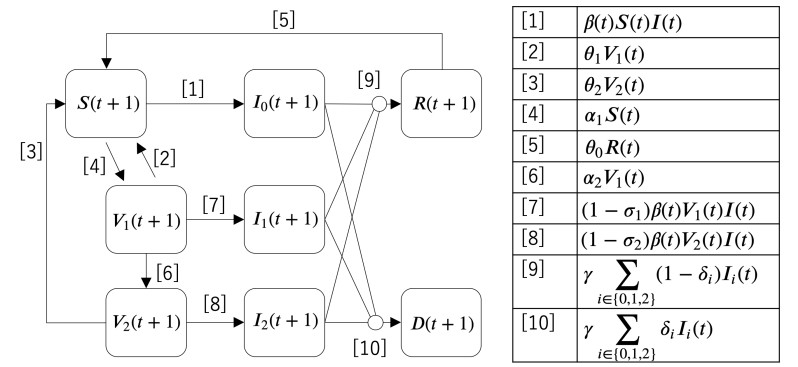
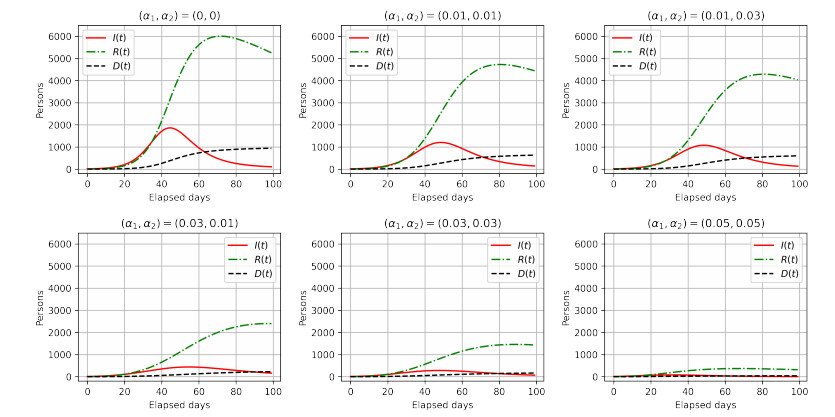
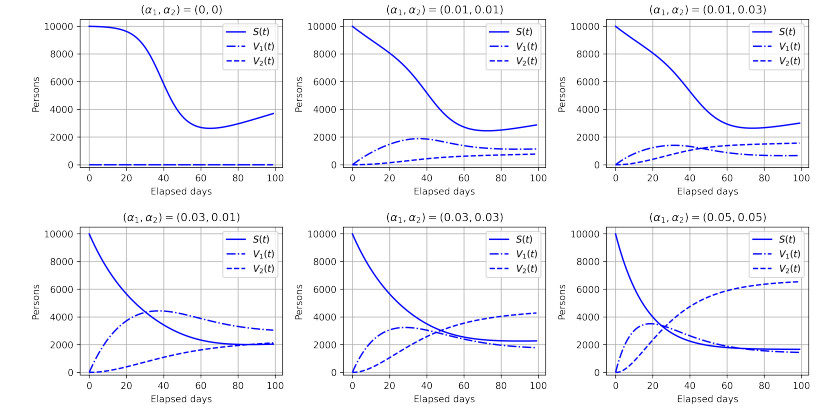
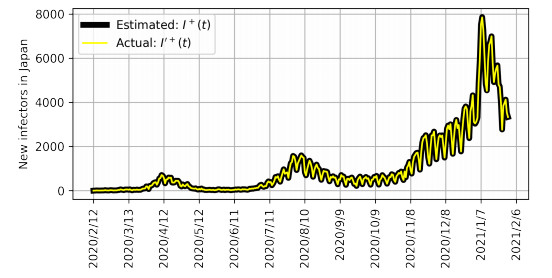
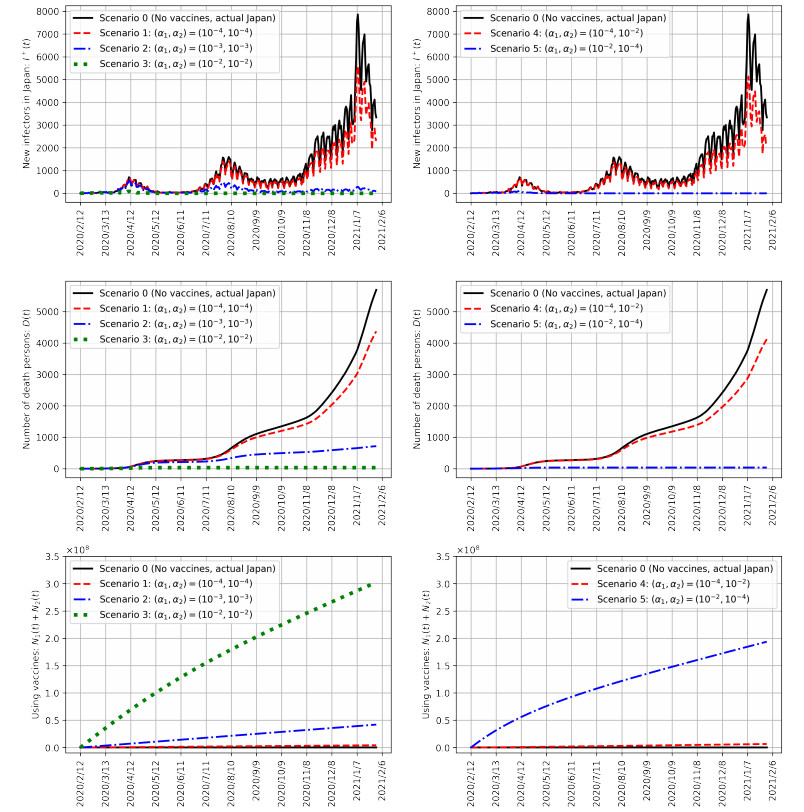
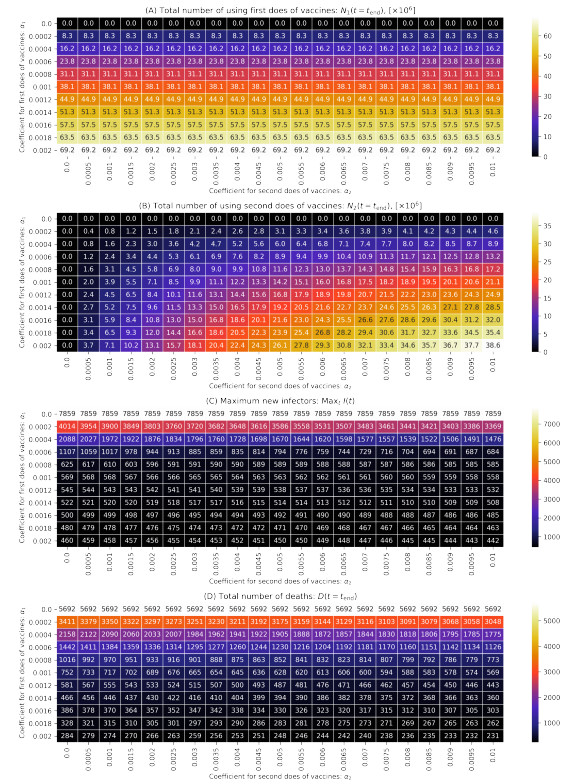


 DownLoad:
DownLoad: